Dear Friend,
I hope you’re well. I was relieved to read some responses to my last letter confirming that I am not the only one who puts off doing things I really care about or consuming content that I know I will really enjoy!
This week I have been trying out a new approach to life that flies in the face of procrastination. It is new (one week-old, to be precise), but I believe proving effective already. Last Sunday I had dinner with Ellen, my dear former housemate who I wrote about in my last letter. We were discussing activity (vs. procrastination) and she used the term “perpetual motion”, and ever since (all this week) this has been my north star. The idea is: you don’t think, you just do.
Another cherished person of mine came to visit on Thursday this week, my mum. If you read my previous letter about her, you will know that she embodies all that is not procrastination, always getting right to the task. When I described my new strategy to her, she was approving, saying:
“Get the boring stuff out the way, then you can enjoy life”.
Then the next day I went to a gym class with my friend Sutanya, and though my gym can sometimes be a hotbed of misogyny, as I’ve written about before, this particularly class is led by a woman so strong that she’s almost frightening. She is Polish, in her early- to late-forties, and appears to be composed entirely of sinew, muscle and eyelash extensions.
She had DEFINITELY got the memo about perpetual motion. At one point she said: “Ok, and now we rest, and by rest I mean change exercise.” When some class members protested she said: “We only really rest once in life, in the tomb”.
I shall try to continue to follow her gospel, and my mum’s.
One of my perpetual-motion projects has been creating an archive of all the Pen Friend letters and artworks so far, a task which I finally finished today. To my satisfaction, a document with all the essays from the first letter in August 2022 to date ran at more than 60,000 words, meaning I have cumulatively written a book’s worth of essays. Meanwhile, I’ve collated more than 100 artworks and illustrations — a triumph for perpetual motion, I like to think!
“Paris is dead”
Last week, as part of a video project, I conducted a short interview with Cyril Aouizerate, the idiosyncratic and stylish founder of MOB Hotels and MOB House. The French entrepreneur previously founded Mama Shelter, a boutique hotel chain that started in the east of Paris. The address set a trend and ushered in (no Super Bowl pun intended) a new wave of affordable hotels with its cool aesthetic, vibey open-plan restaurant and laid-back, creative atmosphere. After selling his part of the brand to Accor Hotels — the giant French hospitality conglomerate that owns hotel brands from Ibis to The Hoxton to Fairmont — Aouizerate opened the first MOB in Saint-Ouen in 2017.
Saint-Ouen is a suburb to the north of Paris, just on the other side of the Périphérique ring-road, the dividing line between Paris intra-muros and the Banlieue, but it’s only about 5 kilometres from the centre of Paris, which is rather central by London standards. The area is most famous for Les Puces, the huge sprawling flea and antique market that dominates the town four days per week. The brocanteurs (second-hand stall-holders) form a significant part of the social fabric; some of the most-loved cafés are named after them and their trade, like Le Relais Des Broc's and Le Comptoir des Puces.
It’s a traditionally populaire or working-class town and one of the historical banlieues rouges — Communist-voting suburbs; today the mayor is from the more mainstream Parti Socialiste. In recent years, more comfortably-off Parisians in search of lower property prices have come up this way, and in parallel there has been a wave of new development, of which MOB Hotel is undoubtedly part (though the gentrification doesn’t feel as aggressive — yet — as it did/does in some parts of London).
Aouizerate, the founder of the hotel, likens Saint-Ouen to Brooklyn about 25 years ago. When I asked him why tourists should consider coming out to the suburb, he said “Paris is dead”, elaborating that the most interesting and rich cultural scene now resides in the suburbs.
On Friday night, I went with a group of friends to see a Saint-Ouen Red Stars match. The local football team, whose English name alludes to the town’s (former?) communist inclinations, has recently been renovated after being bought by an American investment firm. The owners, called 777 Partners, describe the team on their website as having a “strong brand identity”. Eventually an apartment and leisure complex will be added to the stadium, including a restaurant with ‘panoramic views’ of the pitch (“we’re not in a zoo”, commented one fan spokesperson).
It reminds me a little of the redevelopment of Brentford, a historically working-class part of West London not far from where I grew up, which has coincided with the ascension of the local team Brentford F.C. to the Premier League. Last year a friend sent me a video about a restaurant located within ‘the Brentford Project’, “a new west London waterside community at the heart of the regeneration of Brentford.” In the video, the restaurant proprietor says excitedly: ‘not many people know about Brentford!’.
After some digging, I found out that the new apartment and retail space was owned by Ballymore, an Irish development company, which has been criticised for the quality of its builds, as well as a refusal to sign up to best-practice safety regulations. These kinds of public-private co-productions have become more common as the UK Government has squeezed council funding, obliging local authorities to become more ‘entrepreneurial’ in their approach. It seems there are elements of the same in Saint-Ouen, though there is also significant pressure from locals to protect the existing community, including protest from the football supporters.
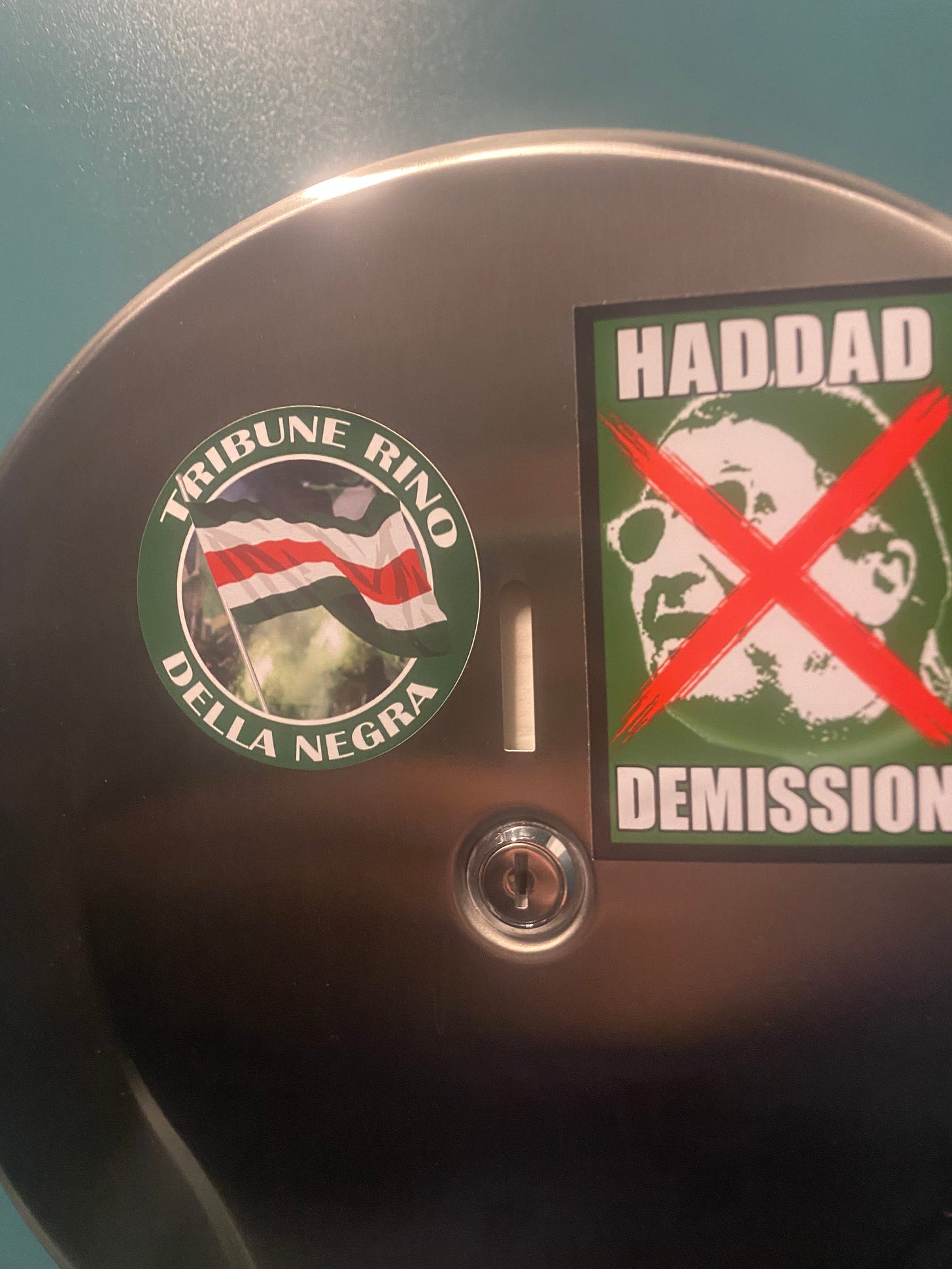
This was my first match at the Red Stars stadium, but a friend explained that the stands used to be all old-school terraces, with mostly standing spectators, but these had just recently been knocked down to make way for the shiny new seats we were in. Saying that, the new design still retained a standing terrace for the die-hard fans who waved huge flags and kept up a non-stop chorus of chants, which ranged from the poetic to the more simple: “la,lo,la,la,lo,lo,lo,lo”. After a slow start, the local team ended up beating Le Mans 4-1, which added to the enthusiasm of the chanters.
After the match, we walked about twenty minutes to Les Docks de Saint-Ouen. The area around the old industrial dock along the Seine was redeveloped over the last few years, with older buildings making way for new apartments. The waterside was tidied up and a new park and greenhouse added. In the day, you can see plenty of ducks and other birds, as well as Coypu river rats.
The dockside area is the new home of the Communale, a giant food hall that just opened a couple of months ago. It was everyone’s first time there and we were all quite astonished — it didn’t feel like Paris at all, it felt like a MODERN CITY!
Huge illustrations on the wall represented former residents and fans of Saint-Ouen, from Edith Piaf to Madame de Pompadour, Louis XV’s powerful mistress, who kept a chateau here, according to the information panel. The vast space, a former industrial warehouse, is peppered with wooden booths selling all kinds of edible delights, from pizza (made by the official sponsor of the Saint-Ouen Red Stars), to Korean street food, to burgers and even some French food — plus a huge and reasonably priced bar.
I’m not convinced Paris is dead just yet, but Saint-Ouen sure is living.
Thirty-second book club
I am still reading Nana by Emile Zola. I am blaming my slow speed on my PERPETUAL MOTION, and also the fact that it’s really, really long. I’m still enjoying it though! I’m just crossing my fingers it doesn’t end too tragically.
Talking of book clubs, this week I had the great pleasure of recording an interview with Louise Binns, the founder of
, or the Feminist Book Club. The organisation’s aim is to “highlight literary projects of diverse feminist voices that elevate the status of oppressed communities.”Louise and I spoke about Paris, my feminist icons (including my mum) and a lot about the myth of Macronism. Intrigued? You should be! You shall have to listen when the episode comes out (I’ll share it here).
That’s all for this week! Thank you very much for reading.
As ever, if you like this letter please consider sharing it with a friend — seeing new people subscribe brings me great joy and spurs on my PERPETUAL MOTION!
I hope you have a good week ahead.
Yours,
Hannah





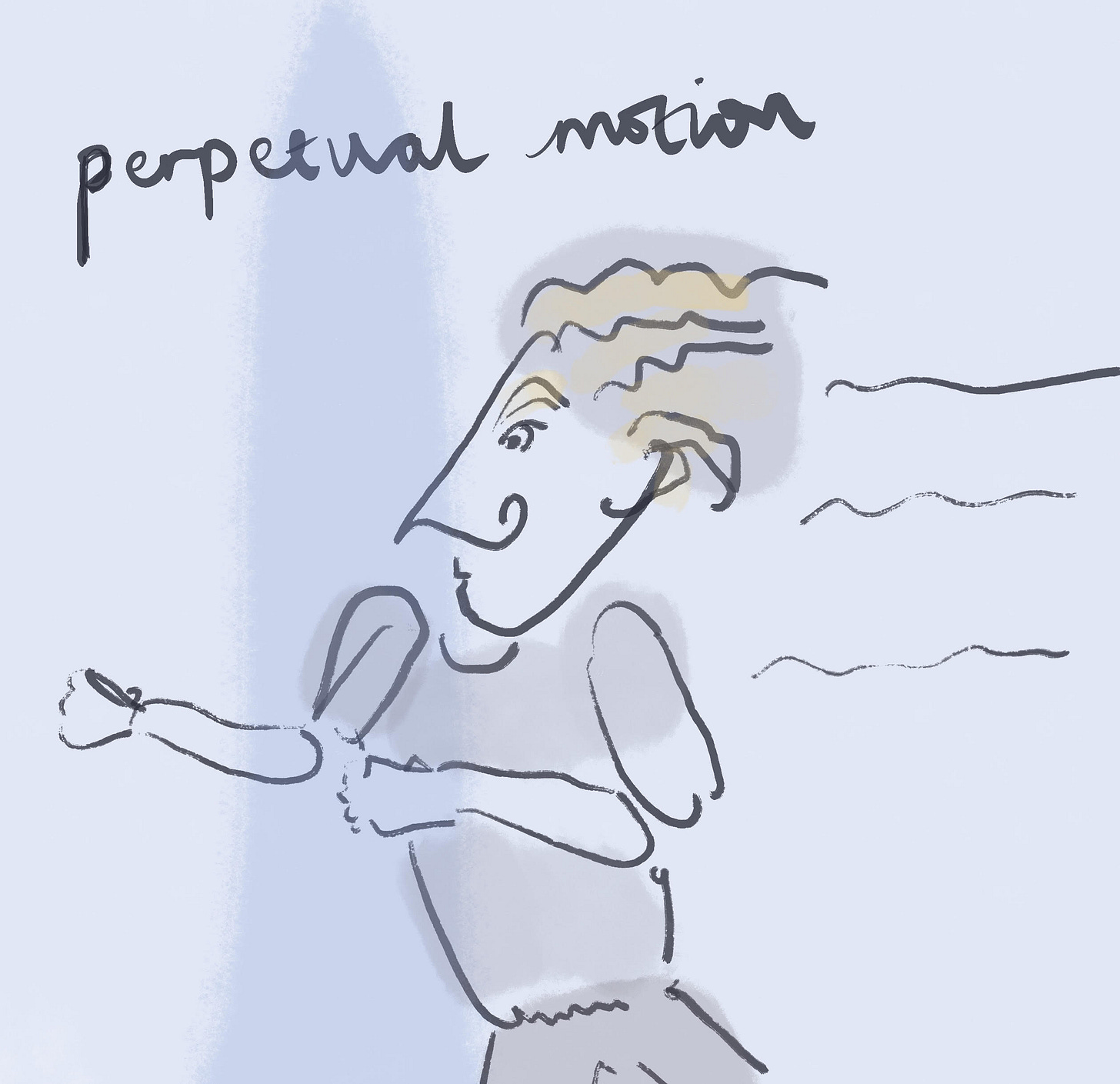
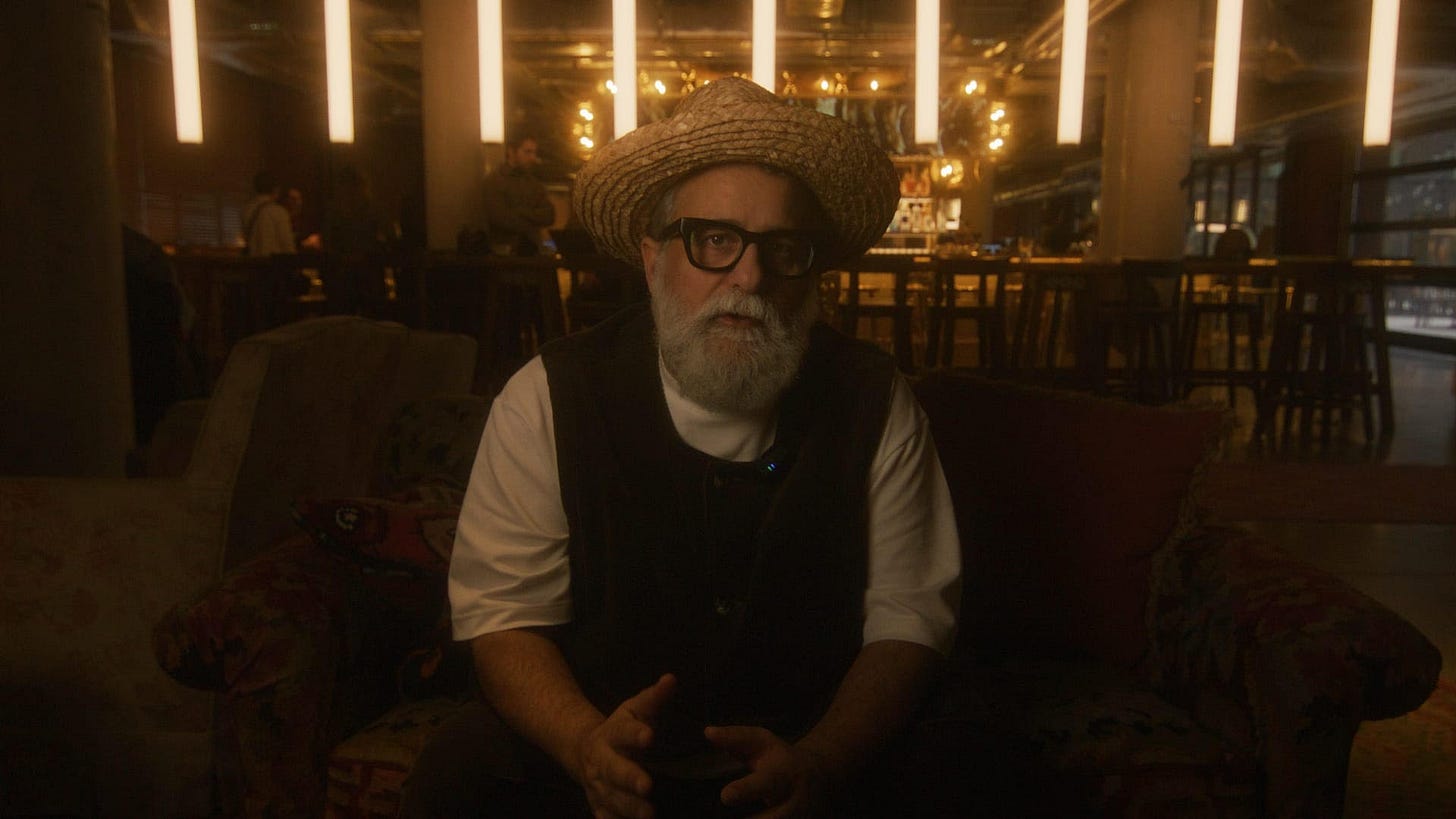
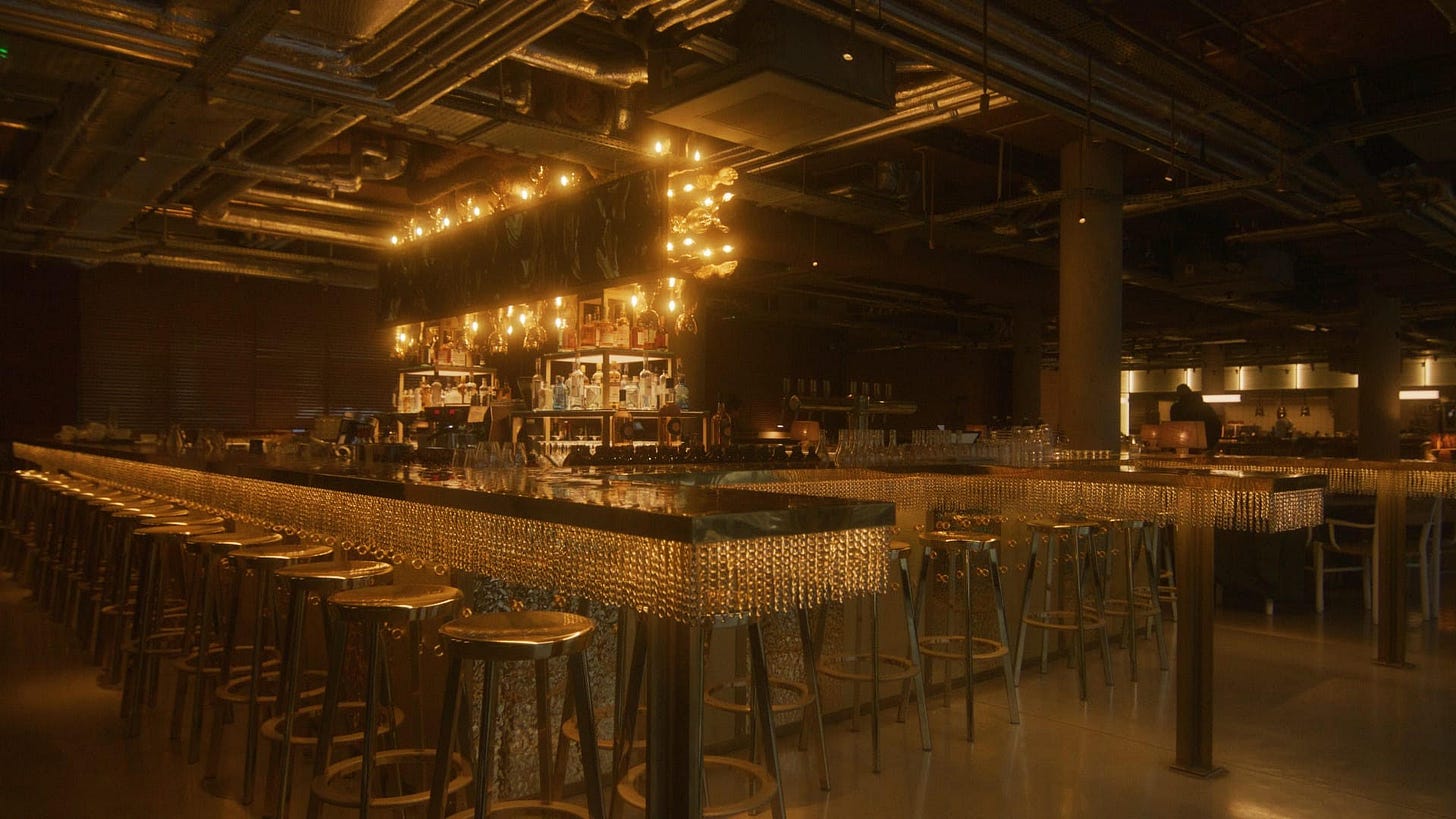
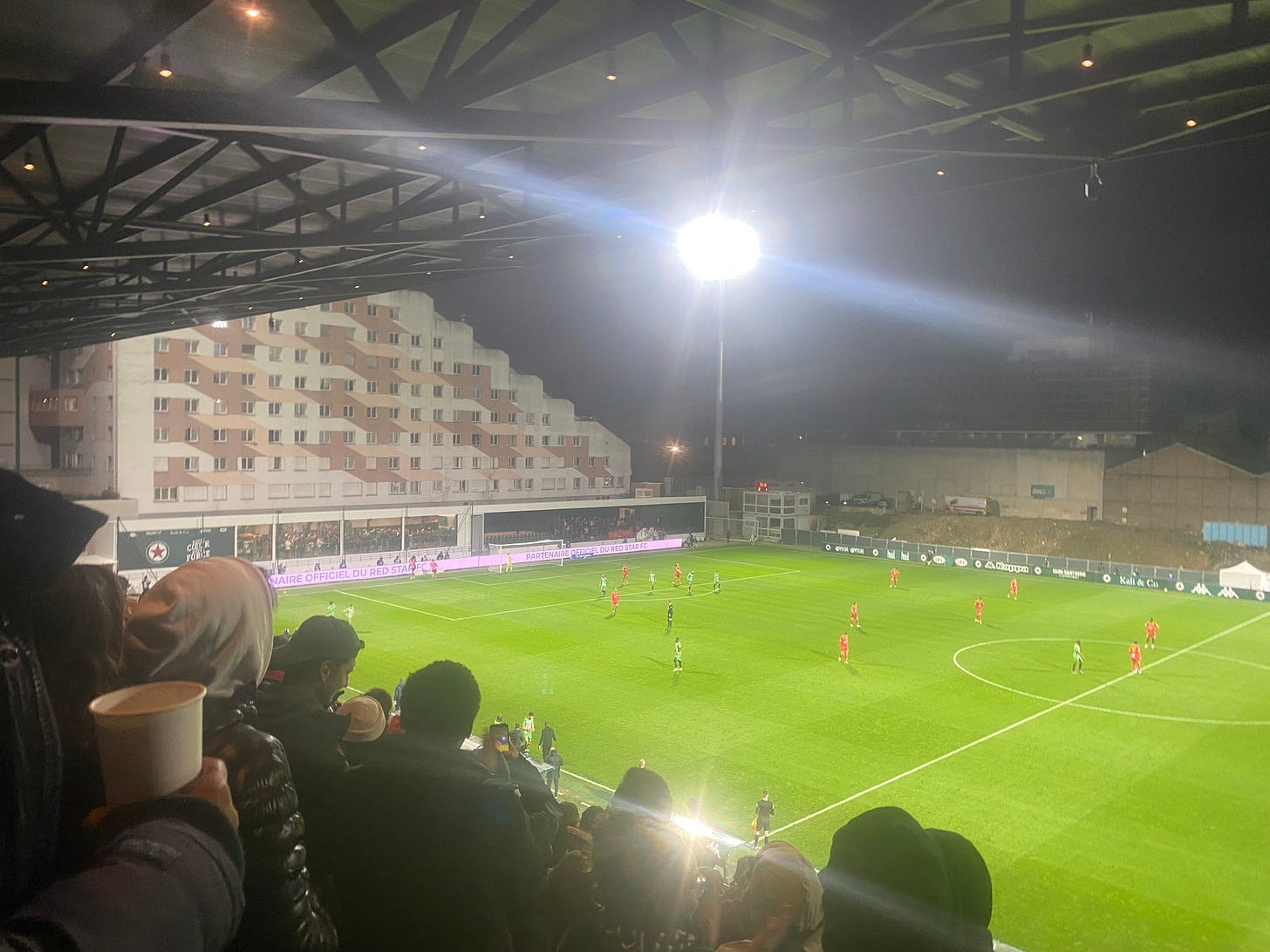



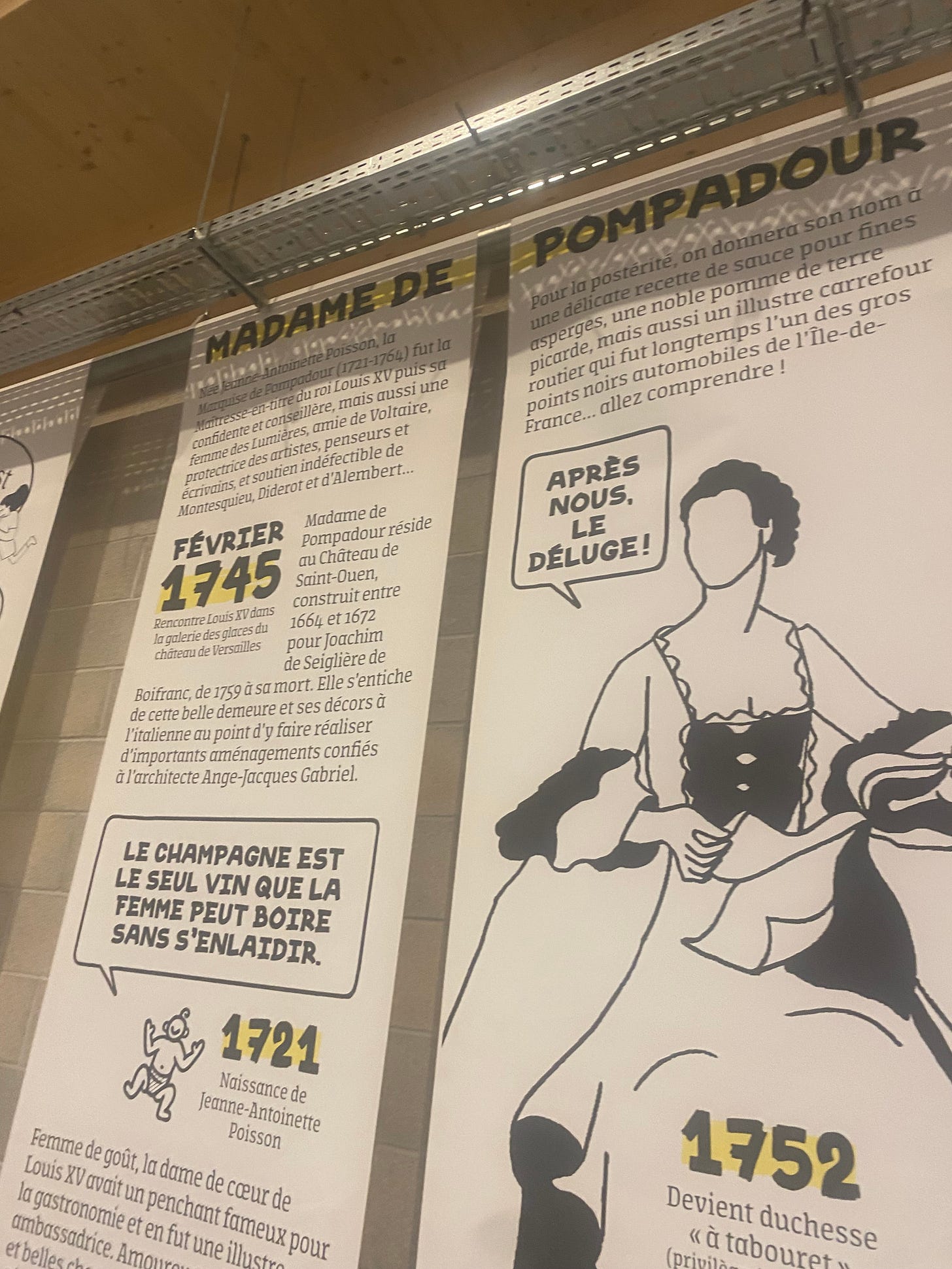
I LOVE "perpetual motion" - I read your newsletter in bed this morning, and this concept propelled me up! I've sort of vaguely had this thought before, but never so well put. I think it's the stopping that undoes me - my sister who has helped with many of my tedious big life tasks over the years, like moving and packing boxes, said once that if she took her eye off me, she'd find me stopped in the middle of a room, staring aimlessly. I feel like perpetual motion is the key to not letting that happen. A great reminder and name for a brilliant concept, thanks Hannah and Ellen!
Hurray for perpetual motion! What a thrill to see our always very enriching conversation out in the wider world. I’ve been thinking about it since, too, I think it’s especially important in these last weeks of winter. It’s the perfect time for a bit of a languish to creep in; we’re no longer in the cosy, delicious dark days of deep winter so it seems like it’s a bit colder than it should be or things are taking a little longer than they ought or there’s just sort of … less going on. Nothing for it but to keep moving!